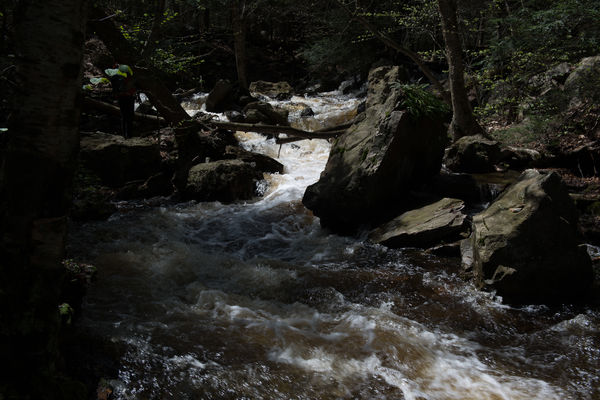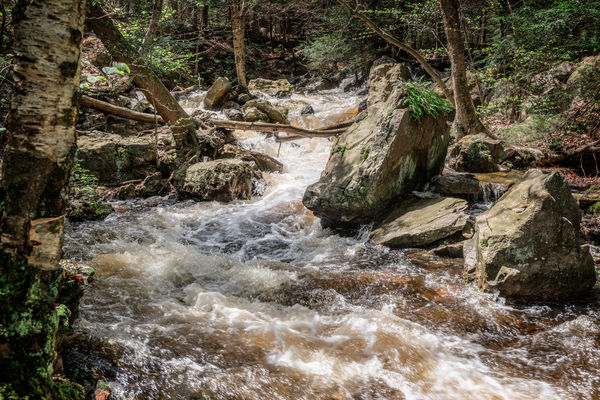Exposing to the right.
Oct 5, 2017 15:10:12 #
Oct 5, 2017 15:19:24 #
RWR
Loc: La Mesa, CA
aaciolkowski wrote:
Why is exposing to the right the thing to do?
It’s supposed to avoid blowing out highlights - very useful for those who don’t know how to use their light meter.
Oct 5, 2017 15:26:19 #
There are a few threads on the subject where you might find the correct answer.
http://www.uglyhedgehog.com/search-topic-list?q=Ettr§num=0&username=
---
http://www.uglyhedgehog.com/search-topic-list?q=Ettr§num=0&username=
---
Oct 5, 2017 15:47:35 #
aaciolkowski wrote:
Why is exposing to the right the thing to do?
For those who would like to squeeze the last drop of ability out of the camera (or have a situation where they need to) and are willing to do the testing required before hand it is a beneficial process.
Follow the links provided to see if you want to go that way.
Oct 5, 2017 15:53:09 #
RWR wrote:
It’s supposed to avoid blowing out highlights - very useful for those who don’t know how to use their light meter.
You've got that backwards.
Oct 5, 2017 16:06:46 #
Rather than the erroneous first reply, try this discussion that includes examples. http://photographylife.com/exposing-to-the-right-explained
Oct 5, 2017 16:12:48 #
aaciolkowski wrote:
Why is exposing to the right the thing to do?
It refers to the distribution of the recorded tonal values on a histogram. In the simplest terms, when your histogram shows a lot of "stuff" to the right it means your image is going to be brighter, to the left, darker.
Most cameras contribute noise of their own. Digital sensors record data in a linear fashion. 1 tonal value, then 2, 4, 8 16, 32, 64 etc all the way up to 16,384 tonal values. Shadows are at the left end of the histogram, along with the noise. If the recorded shadow information is at the 256th tonal value, but the noise is at 128, it will be hard to distinguish noise from image data. But if your shadows are at 1024 the noise is considerably lower than the recorded data, and it will look "cleaner". The takeaway is that the higher the tonal value is the better the image quality will be. Hold that thought.
Exposing to the right comes in two flavors.
For low and medium contrast subjects it means adding exposure to move the image data as far away from the LEFT side of the histogram as possible, while at the same time checking that none of the brighter areas that you want to retain detail in come in contact with the RIGHT side of the histogram. This will place the darkest shadows at levels that are brighter than the noise (cleaner) and you will have greater tonal range and detail.
For high contrast or very wide dynamic range subjects, it means using the brightest areas of the subject as your guide for exposure. The easiest way to make use of this would be to switch your camera to spot meter mode, and measure the highlights. To expose to the right in most cameras that will mean ADDING 1 to 1-2/3 stops exposure to the camera's reading. This will get you very bright highlights but not overexposed. The end result will be an image that appears dark but the highlights will be exposed correctly. Post processing will "lift" the shadow areas to reveal detail, and careful application of sharpening, contrast and noise reduction will help make the darker areas cleaner and more normal.
The image below is an example of a high contrast (wide dynamic range) subject, and the use of exposing to the right, using the bright, foamy water as a target for exposure, and adding 1 stop over the cameras reading.
As you can see, the first image is very dark. But the second one is more like what I saw, and has considerably better tonal range and more shadow detail (and I took the woman with the tripod out of the picture).
What is confusing is that with low to moderate contrast subjects the resulting image before post processing will be brighter, and with high contrast ones the image will be darker. Shooting raw will provide the most latitude and better options for creating a normal looking image when using ETTR.
This article covers ETTR in greater detail, and shows the relationship of tonal value to noise, or more accurately signal/noise ratio.
https://photographylife.com/exposing-to-the-right-explained
(Paul, you beat me to it, but it is an excellent reference.)
Oct 5, 2017 16:14:29 #
RWR
Loc: La Mesa, CA
Gene51 wrote:
You've got that backwards.
It wouldn’t surprise me if got the first part wrong! As for interpreting light meter readings, it’s no more difficult with digital than with slide film.
Oct 5, 2017 19:58:41 #
Thanks everyone for your replies. It will take a while to digest all the information.
Oct 6, 2017 07:38:41 #
Oct 6, 2017 07:41:40 #
Oct 6, 2017 07:45:06 #
aaciolkowski wrote:
Why is exposing to the right the thing to do?
I've heard people suggest exposing to the left. I expose to the center and then process the images.
https://digital-photography-school.com/exposing-to-the-right/
https://photographylife.com/exposing-to-the-right-explained
http://www.cambridgeincolour.com/tutorials/digital-exposure-techniques.htm
Oct 6, 2017 08:25:07 #
Gene51 wrote:
It refers to the distribution of the recorded tona... (show quote)
As usual Gene51...great explanation and insight...
A question (sorry to hijack the OPs thread but perhaps this line of dialogue will add to the value of the original question)
If you were shooting a family wedding photo with the camera and subjects in the shade (no speckle) but the background included hot sun on hedges and a mansion....would you expose for the hot spot and lift the dark areas on the subject in pp or expose for the subject and darken the hotspots in pp ?
I always bias to getting the peoples faces as close to correct and deal with the other issues as 2nd priority but perhaps there is a balance here that i need to consider...
(....and shooting them in a different spot that doesnt have a hot background is the correct answer but humour me....:-)
Oct 6, 2017 08:33:10 #
crazydaddio wrote:
As usual Gene51...great explanation and insight...... (show quote)
Use your fill flash like any professional ...
Oct 6, 2017 08:45:30 #
Pablo8
Loc: Nottingham UK.
cthahn wrote:
What does that supposed to mean?
What is 'WHAT' supposed to mean??
If you want to reply, then register here. Registration is free and your account is created instantly, so you can post right away.








